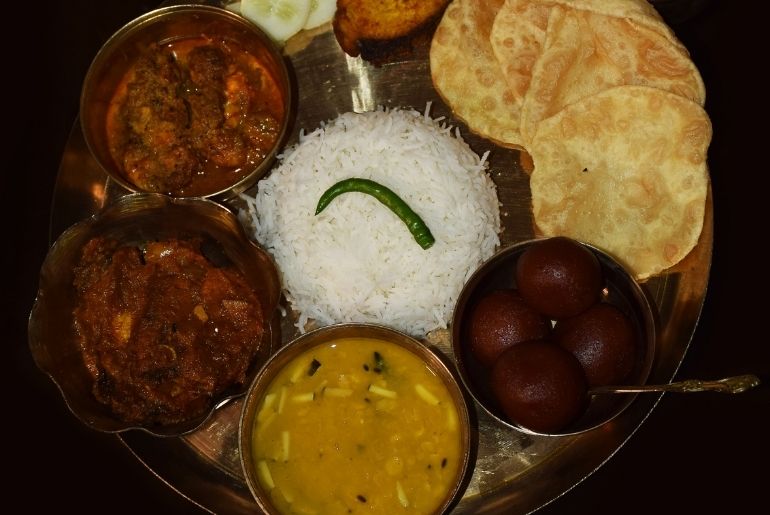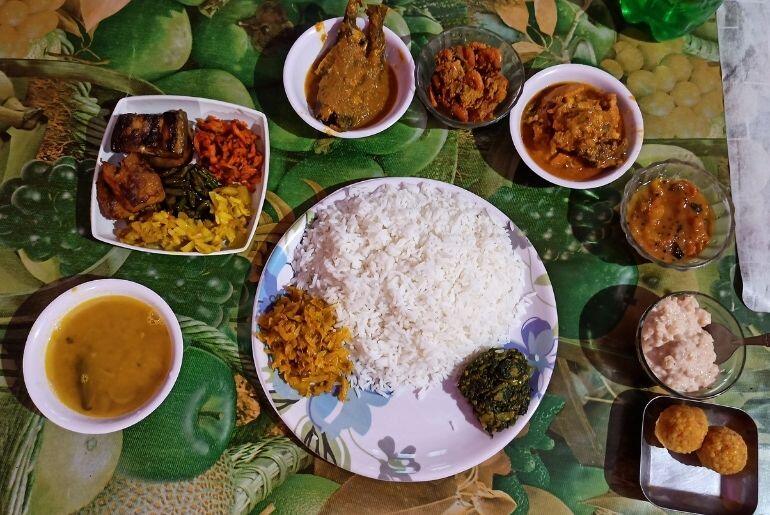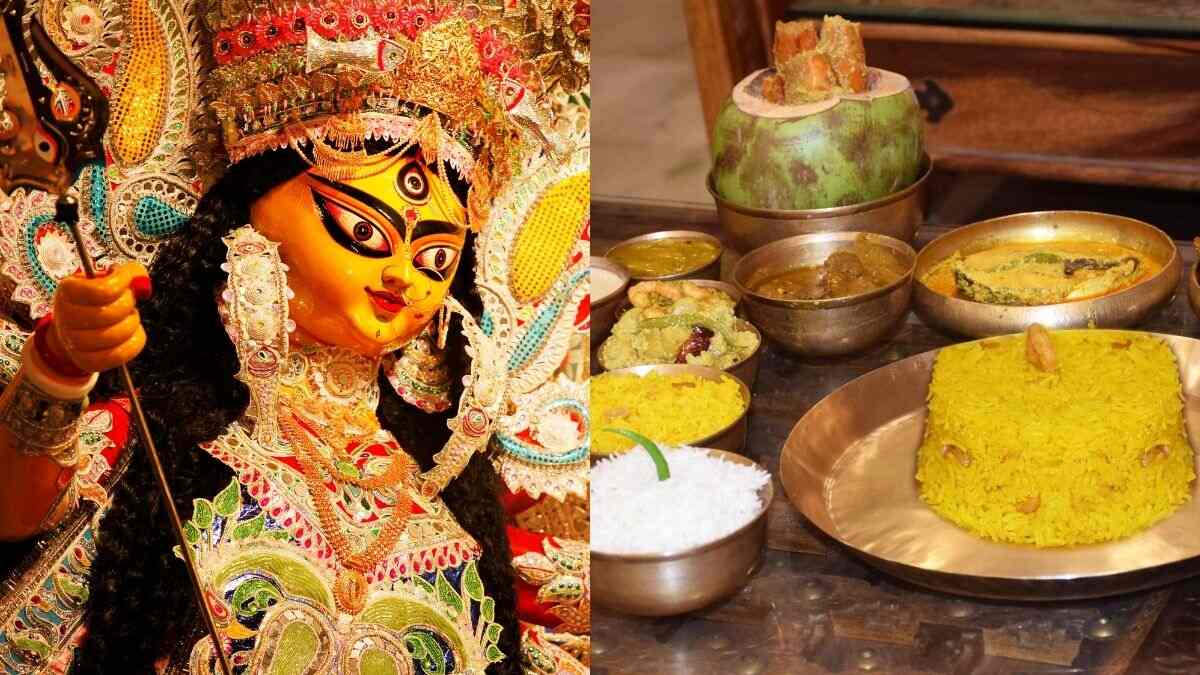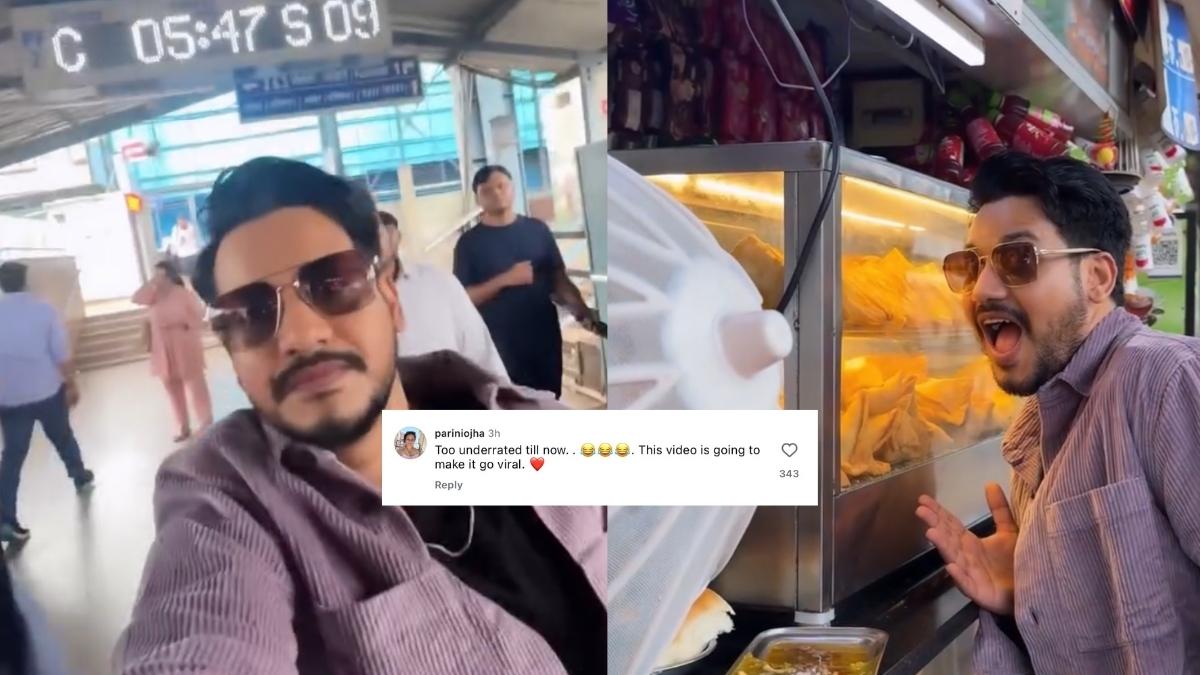Today might be a boring Monday full of Monday blues for everyone but for Bengalis, today is Dwitiya. Today is the second day of Devi Paksha and we are steadily heading towards the days of pandal hopping and relishing food all throughout. Durga Puja means a lot of emotions; Maa Durga’s arrival, pandal hopping, spending time with family, meeting friends who live in a different city, and of course enjoying a gastronomic bhuribhoj. No festival can ever be complete for Bengalis without indulging in a lavish feast.
Enjoying Bengali Cuisine Is A Must During Durga Puja

The biggest festival of the year is a culmination of a lot of things. We celebrate the arrival of Maa Durga and entourage along with our culture and centuries-old traditions. It is a festival of joy, happiness, and praying for prosperity and good health. And all these things come together to a fruitful experience with the inclusion of Bengali food. Most Bengalis are khaddoroshik (foodies) and Petpujo is a must during Durga Puja.
Also read: Durga Puja 2023: What Is The Significance Of The Sound Of Dhak And Of Dhunuchi Dance?
But but but… before I move forward sharing the significance of eating Bengali thali during this pujo, let me just share that Bengali cuisine is not just maachh bhaat, roshogolla (yes, and not rasgulla), and mishti doi. This cuisine is a vast treasure of finger-licking delicacies and you are in for a treat at any time.
Why Do We Love Eating Bengali Thali During Puja?

Durga Puja is celebrated in West Bengal for centuries now. Started long back in the 1700s, zamindars began the tradition of this festival, according to a report by Moneycontrol. It later evolved to be humongous, grand, lavish, and extravagant. Starting from the late 1700s, the traditions of both barir pujo (Puja of Zamindars) and the pandal of a neighbourhood began.
And over the years, the numbers of both barir pujo and sarbojonin pujo enhanced to larger-than-life celebrations and we see presentations of such pandals each and every year. In any Durga Puja pandal and celebrations, enjoying good food is a must. And unlike Navaratri celebrations, we Bengalis love relishing bowl after bowl of meat and fish during these 5 days. But some people also follow the tradition of eating vegetarian food only during Ashtami.
Also read: Flipping Through History: Inside Delhi’s 110-YO Kashmere Gate’s Durga Puja, First In The Capital
What Is Usually Served?

The menu is more or less similar in most places. During the 5 days of Durga Puja, the menu includes
- Luchi
- Chholar Dal
- Bhaat
- Moong Dal
- Aloo Bhaja, Begun Bhaja, Potol Bhaja
- Torkari
- Fried Rice
- Basanti Polao
- Paneer
- Chicken/ Mutton
- Chutney
- Papad
- Roshogolla
- Mishti Doi
- And many more sweets
Also read: What Is The Symbolism Of Navapatrika, The Tree Next To Lord Ganesha During Durga Puja?
What Is So Special About The Bengalis’ Way Of Eating?

Not only do we have a definite way of enjoying our meals but we also eat our food in a specific pattern. The foodie journey begins with some starters, luchi, chholar dal, and alur dom. Then the next is eating sada bhaat with dal, bhaja, torkari, and maach. Next, comes polao and the type of meat served on that day, either chicken or mutton. After this we eat chutney and papad, the best pair on Earth. Lastly, for mishtimukh, we devour different kinds of sweet treats served.
We like to enjoy our meals in small courses and this way of eating food is continuing for a very long time. It helps in enjoying the dishes one by one and understanding their taste and texture. If you follow the consumption pattern, you will understand that we begin with vegetarian dishes, then move towards non-vegetarian food, and then cleanse our palate with chutney before digging into sweets.
Jibhe jol chole elo! Hope you enjoy a spectacular Durga Puja and have a grand bhuribhoj.
Cover Image Courtesy: Canva
For more such snackable content, interesting discoveries and latest updates on food, travel and experiences in your city, download the Curly Tales App. Download HERE.
Good news! We are on WhatsApp! Subscribe to Curly Tales WhatsApp Channel to stay up-to-date with exclusive content and BTS. Join HERE.
First Published: October 16, 2023 5:22 PM



